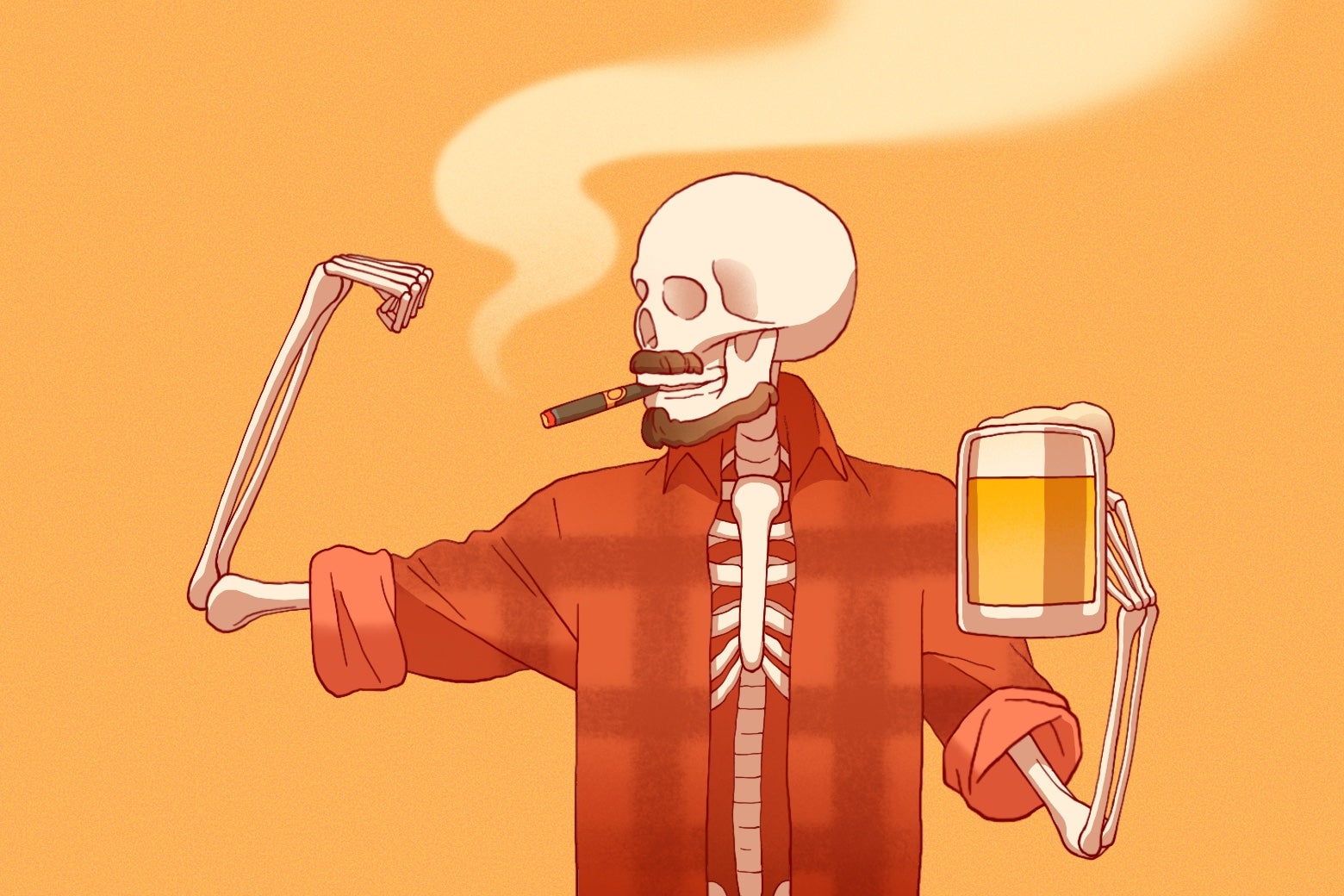
"To be clear, you can easily buy a skeleton dressed like a schoolgirl, or a mermaid skeleton (-maid, that means girl, right?), but those, as far as I can tell, are just normal skeletons that have been dressed in schoolgirl drag or had a tail attached to them. And a normal skeleton-the thing most of us picture when we picture a skeleton-is, I'm increasingly convinced, more often than not going to be a male skeleton."
"Everyone imagines their own skeleton looking like one of those life-size models from middle-school biology class, but this teacher cautioned that I should dispense with the idea that mine looked like that, because we're all different but also because the model was probably based on a man. At the time, I applied this to explaining why I might never be able to do certain poses, no matter how much I stretched, but now it occurred to me to apply it to Halloween decorations."
Retail Halloween skeletons include novelty versions—alien, two-headed, seesaw set, and pumpkin-headed options—but most remain anatomically generic and implicitly male. Many purportedly feminine skeletons are merely dressed in gendered costumes or modified cosmetically without anatomical changes. Standard life-size skeleton models used as templates are likely based on male anatomy, obscuring the natural variety of human bone shapes and sizes. Such representations fail to reflect differences that influence posture and movement and reinforce a male-default image of the human skeleton within popular decorations and cultural imagination.
Read at Slate Magazine
Unable to calculate read time
Collection
[
|
...
]